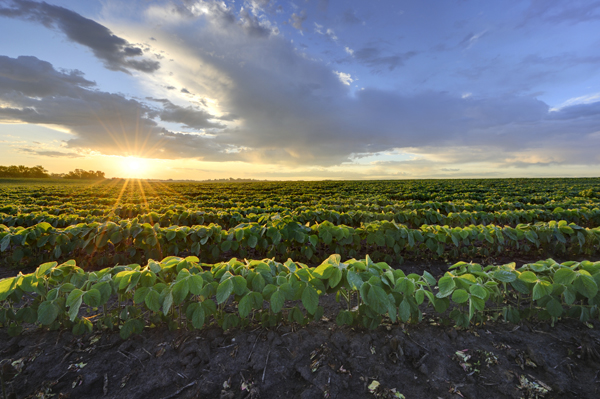Where are 2015 Nebraska Farmland Values heading?
 Farmers and agricultural analysts have been forecasting a correction in land values for a time, and according to new data, their predictions have come true, although we may be in for a softer landing than some might have initially anticipated.
Farmers and agricultural analysts have been forecasting a correction in land values for a time, and according to new data, their predictions have come true, although we may be in for a softer landing than some might have initially anticipated.
Following the general price trends for the record-setting high cattle and lower grain markets, corresponding ag land values have followed suit to their supported commodities. According to preliminary data from the University of Nebraska-Lincoln’s annual Nebraska Farm Real Estate Market Survey, weighted land values for the state declined 3 percent over the last 12 months. This is the first decline indicated in several years of the survey.
Delving into the particulars of the survey, dryland cropland had the strongest rate of decline in the state, at a 10 percent decrease, when compared with center-pivot and gravity irrigated cropland. In contrast, pasture and cow-calf pair rental rates increased about 15 percent across the state due to higher cattle prices and drought assistance provided by the Livestock Forage Disaster Program (LFP).
While cropland was lower, land that supports the cow-calf industry, including tillable and non-tillable grazing land, and hayland, was anywhere from 10-20 percent higher. Hayland, in particular, saw the higher increase in value, with the strongest increases in the Northeast and Central parts of the state.
Irrigated cropland—both gravity and center-pivot—reported a decline of about 3 percent statewide. This lower rate of decline was attributed by survey respondents to generally higher and more consistent yields in comparison to dryland yields. The Central District of Nebraska reported the sharpest decline in the irrigated land class, at approximately 14 percent, with slight decreases reported in the Northeast, East, and Southeast Districts of Nebraska.
Cash rental rates for both irrigated and non-irrigated farmland decreased as well, anywhere from 5-15 percent across the state.
Survey participants were not hopeful that these prices were ready to bounce back any time soon, either, with overall bearish projections based on lower grain and oilseeds prices.
While the trend seems to show overall decreases in land values for the foreseeable future as long as commodity prices remain low, it should be noted that land values don’t always follow the market trends.
Jeff Caldwell of Agriculture.com notes, “The farmland market isn’t exactly following the grain markets lower. In a lot of situations, circumstances like proximity to bidders’ existing acres, CSR (corn suitability rating), and other variables can drive bidding higher, even if it’s completely in the face of fundamental land market trends.”
If you have questions regarding the value of your land asset, please don’t hesitate to meet with us at UFARM. We are here to answer all your land market questions.
UFARM offers a full range of Nebraska land management services, including real estate sales, rural property appraisals, consultations and crop insurance. UFARM has operated in Nebraska since the early 1930’s. Contact us today!
Sources Consulted: Jansen, Jim and Roger Wilson. “2015 Trends in Nebraska Farmland Values and Rental Rates Reflect Changes in Agricultural Commodity Prices.” University of Nebraska-Lincoln Agriculture Economics. University of Nebraska-Lincoln. 04 Mar. 2015. Web. 15 Apr. 2015. Caldwell, Jeff. “ Farmland Metadata and Precision Ag Influencing Land Prices?” Agriculture.com. Meredith Agrimedia. 14 Apr. 2015. Web. 15 Apr. 2015.

